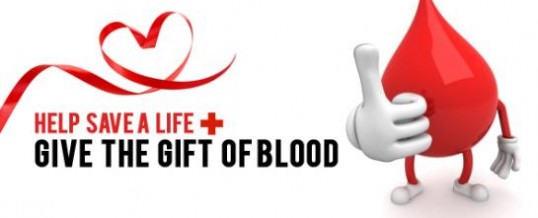
I volunteered just to get out of class.
It was 1980 and I was a senior in Arkansas at Ashdown High School. One spring day, the bloodmobile came to our campus and our third period teacher announced that anyone who wanted to help those in the hospital could donate.
Like most 17-year-olds, I was more interested in what was in it for me rather than for people I didn’t know who were in a hospital.
So, I raised my hand, got up and followed the handful of other students out of the room who also wanted to skip math class.
When we walked into the library, I saw a sea of portable cots scattered in the large open area of the room, which separated the rows of books.
I chose a cot as far away from the math section as possible. The literature section looked good, and besides, the girl drawing blood in that area was cute.
She told me to get comfortable, lean back, and roll up my sleeve. As she prepped my arm with a yellow solution, she asked if I’d donated before. “No,” was my response. “Honestly, I just did this to get out of class. But I do have a question. Is this going to hurt a lot?”
In my haste to bail out of math class, I’d failed to consider that someone was actually going to put a needle in my arm.
“I’m not going to lie to you,” she responded. “There is a slight bit of discomfort, which varies from person-to-person, but the discomfort for the donor is almost always far less than what the person who’s going to receive your blood is going through.”
Receive my blood? It suddenly became quite clear to my teenage brain that my blood was going into another human being.
Wow.
“So, why do people need blood?” I asked.
“Well, blood has several very important jobs,” she said. “There are four main components, which are red blood cells, white blood cells, plasma and platelets. Each component is separated out after you donate and used to help different patients.”
I felt a slight sting. It was virtually painless.
The entire process took about 30 minutes. About 25 minutes of that was filling out paperwork and being screened.
When I could, I donated at subsequent school blood drives. After high school, I took a job in Texarkana.
My new job happened to be located next door to the blood bank. They called me every eight weeks and I would walk over and donate.
In the mid-80’s, I moved to Texas, where I continued donating blood. I’ve now surpassed 100 donations.
A friend of mine once asked me why I keep doing it. I told him that even though I’d never really met or known anyone who needed what I had given, I felt that it was a type of unspoken testimony that maybe others would see and want to emulate.
Then came 2013. Someone quite close to me was diagnosed with cancer.
That 17-year-old boy who wanted to get out of math class suddenly was a middle-aged man praying for the healing of someone he loved.
Cancer patients need platelets. Lots of them.
I now go every month and donate platelets on a device called an apheresis machine. They take some of my platelets, which my body quickly replaces, and return my red blood cells and other components to me. It takes only a little of my time, but I know there are several someones out there who need me to do it for them.
According to one stat I read, someone needs blood every 37 seconds in America. Another stat indicates that only 1 out of 10 Americans ever donate.
We’re Americans. We can do better than that.
What do you say? Join me? Let’s all become regular donors.
Free juice and cookies, and the satisfaction of knowing that if someone needs blood or one of its components, it’ll be there for them.
Who knows? One day, that someone could be you or me.
©2014 John Moore
SEP
2014
